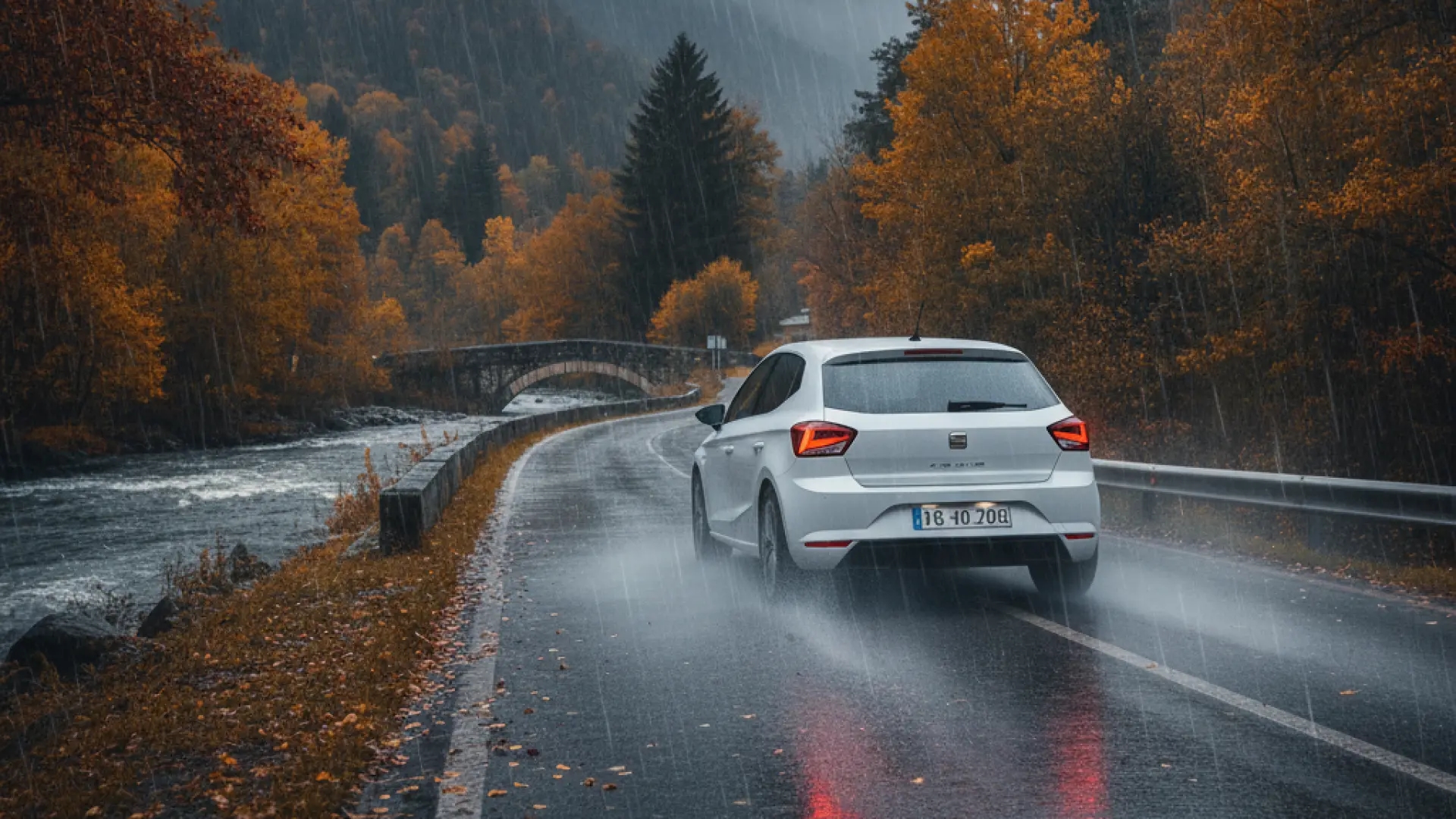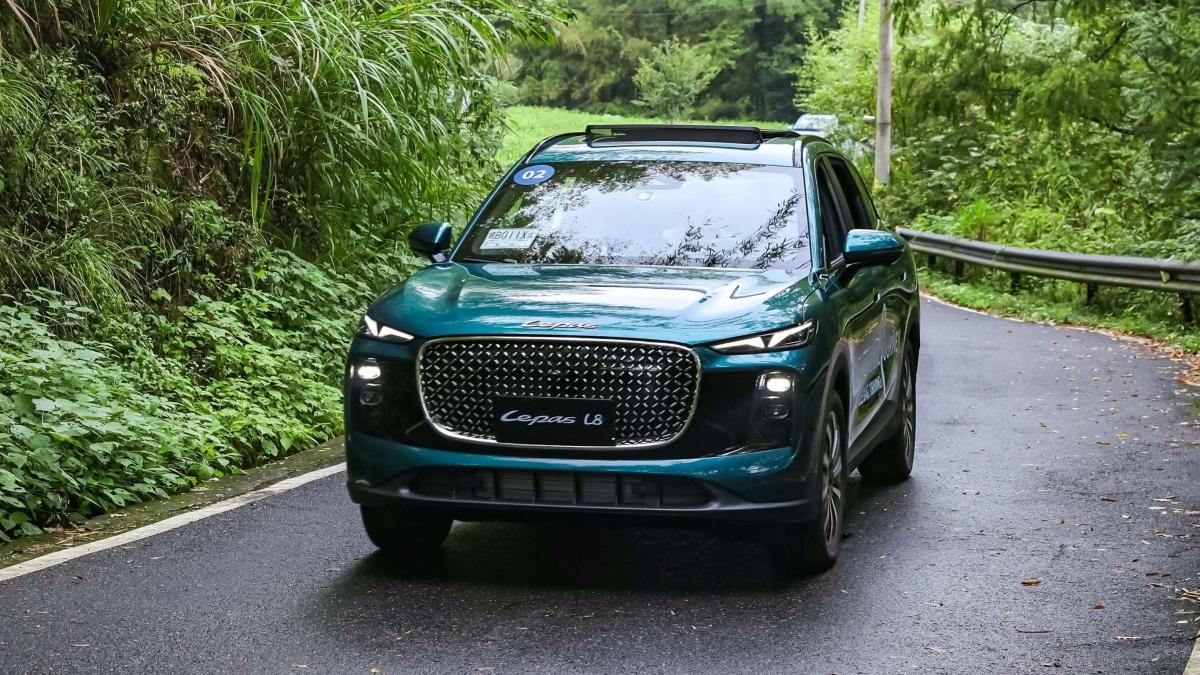The ultimate guide to safe driving in torrential autumn and winter rains

The autumn rains have been slow to arrive, but they are now starting to make themselves felt in much of the peninsula. Given this situation, we wanted to We, along with Norauto, emphasize the importance of inspecting and preparing your vehicle to avoid unexpected events arising from these precipitations, so characteristic of the autumn season. We also remind you that knowing how to react in the event of torrential rain is key to ensuring road safety, especially when these adverse conditions surprise drivers on the road. Here's how to get your vehicle ready in 10 steps.
1. Good condition of the tiresWorn, glazed, or cracked tires result in reduced grip and reduced road holding. The brand reminds us that tread depth should not be less than 1.6 millimeters and recommends not going below 3 millimeters for greater grip in wet conditions.
You can check tread wear by locating the warning signs on the tread , which can vary from brand to brand, ranging from the manufacturer's logo to a triangle or the acronym TWI (Tread Wear Indicator). If the tire is close to this wear limit, it means it needs to be replaced.
2. Tires suitable for rainThese are popularly known as winter tires and all-season tires . Winter tires provide excellent performance in rain, ice, or snow, and are designed to adapt to cold weather conditions and difficult roads. All-season tires are suitable for year-round use, as they simultaneously offer all the characteristics of winter and summer tires.
3. Liquid levelsThe vehicle's fluids should be checked and topped up if necessary, especially the oil, coolant (level and temperature), brake fluid, power steering fluid, and, of course, windshield wiper fluid.
4. Correct operation of the brushesBoth the front and rear windows must be able to properly sweep and clean the windshield.
Many wiper blades are in poor condition after the summer due to prolonged exposure to the sun and high temperatures, as the rubber film degrades. Added to this is the fact that they become deformed if they haven't been used for a long time. Therefore, many cars arrive in the fall with wiper blades in poor condition , and it's important to check them and replace them if necessary.
5. Operation of the air conditionerWith the drop in temperatures it is normal for the crystals to begin to become fogged up, which happens because the difference in temperature outside the vehicle compared to the interior. In this regard, it is recommended to make proper use of the vehicle's automatic anti-fogging system, both front and rear. If this system is not available, You can direct the air conditioning to the maximum towards the windows to eliminate fogging .
6. Operation and condition of the brakesIt's essential to check that the pads and discs are in good condition and that the vehicle brakes properly. Keep in mind that braking distance increases in rain.
7. Correct operation and leveling of the lightsThere should be no burnt-out lights , and they should be level to avoid glare. Remember to turn on the side and dipped beam headlights. in case of not counting the Daytime running lights, during rainy weather, increase visibility. Fog lights are only necessary if the rain is very heavy.
8. No indicators on the dashboardIf you have the slightest doubt, it's recommended to have your vehicle electronically inspected, especially if it has a wide variety of driver assistance systems known as ADAS . Their proper functioning is vital.
9. Clean carIf your windshield is covered in grease and dirt, it will deteriorate with the first drops of rain, greatly impairing visibility. A clean car is also more visible.
10. Equip the car with everything you needIn January 2026, the use of the connected and approved V16 warning sign will be mandatory. It will replace triangles and offer optimal vehicle visibility in the event of a breakdown, accident, or any other type of road incident. This is only if the vehicle is on a road with no change in grade or curve, because in that case, the warning light will not be seen by other road users.
In our opinion, the mandatory nature of this device should be reviewed.
It is also advisable to check that all the documentation is in order and, in addition, it is advisable to carry Water, blankets, first aid kit, flashlight, fire extinguisher and the mobile always with battery to be ready for any type of incident.
How to act in the event of torrential rain?It is recommended Check the weather and traffic conditions frequently to know the forecast and road conditions . Today, technology allows us to access this information in real time, and of course, the radio remains the best ally. Therefore, we must always follow the instructions of the authorities and avoid driving in unfavorable conditions, even if the alert takes a while to arrive.
- Reduce speed to be able to react appropriately to unforeseen events.
- Drive firmly to avoid losing control of the car.
- Increase the safety distance from the vehicle in front.
- Avoid sudden braking and sharp turns.
- Turn on your headlights to improve visibility. When it's raining, keep your parking lights and dipped headlights on. Use your fog lights only if it's raining heavily.
- Do not drive through flooded areas or areas with standing water. It is important not to drive through puddles of unknown depth, much less through pools of water or completely flooded areas. Here, the risk of aquaplaning increases, especially if the tires are not in good condition. The depth is unknown, and therefore, the tire may lose contact with the road, losing control of the vehicle. Of course, you should never drive through a flood and it is recommended to stay as far away from it as possible.
- Stop in a safe place if visibility is very poor. If the situation worsens, it's important to take cover and get to a safe place.
- Avoid driving in areas near rivers, swamps, and reservoirs that could overflow if the rain intensifies, it concludes.
- In case of flooding or a flash flood: In any dangerous situation, call the emergency services as soon as possible: 112. Report the situation and location and ask for help. If the water has reached approximately 30 centimeters, it is recommended not to leave the vehicle and to wear your seatbelt. If the car is swept away by the current and you have not been able to get out beforehand, you will probably not be able to open the door. In this case, you should exit through the window. Under no circumstances should you swim against the current, but rather with it and hold on to something firm. If the current is very strong, the best thing to do is climb onto the roof of the vehicle and wait for the emergency services.
20minutos





